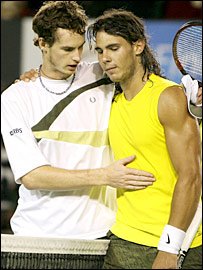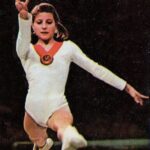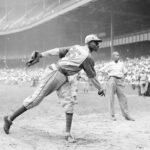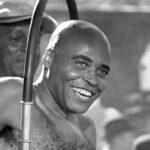Rafael Nadal and Andy Murray Chase History

Andy Murray and Rafael Nadal will each be continuing their quest for tennis immortality when they meet in the Wimbledon semifinals.
There’s a famous scene in Chinatown where private detective Jake Gittes faces the evil tycoon Noah Cross, who has been stealing water away from the needy populace to lower the price of land that he can then buy. “Why are you doing it?” Gittes asks. “How much better can you eat? What can you buy that you can’t already afford?” “The future,” Cross responds. “The future!” Rafael Nadal seems a far more pleasant human being than Noah Cross, but his motivations appear to be similar.
With seven majors and one of the all-time great clay court résumés already to his credit, Nadal is still looking to add on, even if it comes at the expense of contemporaries starved for Grand Slam success. Unlike Roger Federer, who could never pick up a racket again knowing he’s already established a compelling case for Greatest of the Open Era, Nadal still has plenty to prove.
Holder of seven Grand Slam titles, Nadal needs one more to move past Mats Wilander and John McEnroe, and two to get past the power-baseliner triumvirate of Jimmy Connors, Ivan Lendl, and Andre Agassi. The chances of his being ranked higher than those names in the history books go up even higher should more of his major wins take place on a surface other than clay. Andy Murray has another type of history to chase. Though he proudly identifies as a Scot, the English public has proudly adopted him as the player most likely to end Britain’s drought at the majors, which stretches all the way back to Fred Perry in 1936.
Murray in many ways plays the classic counterpuncher’s game, frustrating heavier hitters with his speed, defending, and ability to turn a defensive position into an attacking one. These attributes have elevated him as high as No. 2 in the world, not to mention enabling him to win four Masters Shields and to reach two Slam finals. In a men’s game where more players are making a living by crushing forehands, it remains to be seen whether Murray’s more patient, cerebral style of play can net him a major.
Twice he has been to the finals of a major, and twice he has been beaten in straight sets by Federer. Beaten in the quarterfinals of this year’s Wimbledon, The Great Swiss will not obstruct Murray’s way this time.
If he is to reach his first final at the All-England Club, though, Murray will have to navigate his way through the semis against Nadal, who recently broke out of a protracted slump and has no desire to cease winning now. If Nadal wins this event (only the second one in which he didn’t beat Federer along the way), he continues to carve an identity for himself separate from the Swiss and from the clay where five of his major victories have come.
It would also be extremely hard to see any player denying him a second year of finishing as No. 1. If Murray wins, he will elate an entire nation, prove a lot of doubters wrong, and show that forehand torque is not a prerequisite to major success. Nadal leads their head-to-head series 7-3, but they are 2-2 in the majors. Murray has won their last two such meetings on the hard courts of the US Open in 2008 and the Australian Open this year.
Due to its setting, though, this match will probably draw comparisons to the 2008 Wimbledon, where Murray turned a corner by beating Richard Gasquet in round four, but was then pummeled by the Spaniard in quarters. That one-sided affair will not be repeated this time. Murray isn’t coming off a draining five-set epic like he had against Gasquet that year.
Nadal, while he has put up a determined performance in week one and outlasted Robin Soderling in the quarters, is not playing at his career-best level of ’08. The closest comparison would have to be to 2007, where Nadal had won the RG, lost early in Queens, then battled through two early five-setters at Wimbledon. Like then, he now appears in decent form for the second week. For Rafael Nadal, “decent” form means that he can be beaten, but it will take an enormous effort to do so. Is Andy Murray up to the challenge? He will need to play as aggressively as he did in Australia, doing his best to keep the Spaniard on the defense and unable to pound away at the Scot’s legs.
His matches, particularly in the last round against Soderling, have shown Nadal to be starting slowly and unable to exert his will early in a match. As the match drags on into the third and fourth sets, though, Murray’s second serve becomes more and more of a drag.
In the five matches he has played so far, the Scot’s second serve speed has averaged in the low-90s. Nadal’s second delivery has been similarly paced, but his first-serve percentage has been in the high-60 range in all five matches he has played. Murray, on the other hand, has only topped 60 percent in first serve percentage twice, against Jarkko Nieminen in the second round and Gilles Simon in the next.
Murray will need a first-serve percentage of at least 60 percent, because the Spaniard is a far more patient baseliner than Jo-Wilfried Tsonga or Sam Querrey, and a far more potent one than Simon or Nieminen. If Murray’s first serve percentage stays in the 50s (or dips into the 40s, like against Querrey), Nadal will eventually start to exert more control over the rallies on second-serve points. When that happens, there’s no one on tour who can stop the Spaniard. I have picked Nadal to win from the outset of this event, and as impressive as Murray has looked at times, I think the Spaniard will break him down in five.
Nadal’s summer has been one for the history books, and his near future looks just as bright.














